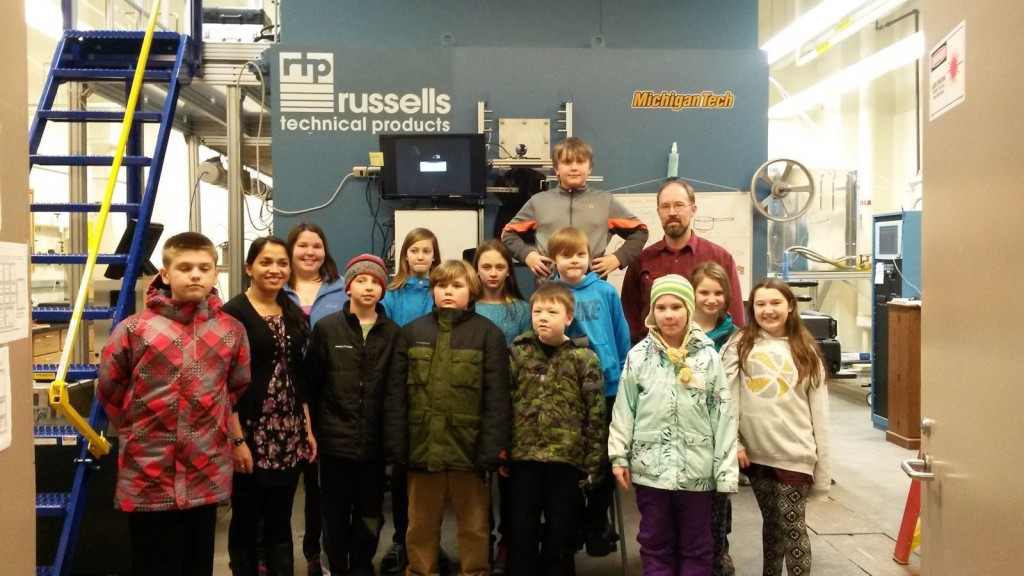Students from Barkell Elementary School toured the Cloud Chamber on March 10, 2016, as part of the school’s Great Explorations program. The tour was hosted by Professor Will Cantrell and graduate student Sarita Karki.
 In Spring 2016, Physics students and Associate Professor Petra Huentemeyer visited CERN, the European Organization for Nuclear Research, as well as the Max Planck Institute (MPI).
In Spring 2016, Physics students and Associate Professor Petra Huentemeyer visited CERN, the European Organization for Nuclear Research, as well as the Max Planck Institute (MPI).
The visit was partially sponsored by the Society of Physics Students (SPS) and the Henes Center for Quantum Phenomena.
Visit the Flickr Gallery
 Raymond Shaw (Physics/EPSSI) is the principal investigator on a project that has received $120,339 research and development grant from the National Science Foundation.
Raymond Shaw (Physics/EPSSI) is the principal investigator on a project that has received $120,339 research and development grant from the National Science Foundation.
Will Cantrell (EPSSI) is the Co-PI on the project “EAGER: Exploring Aerosol Indirect Effects in a Laboratory Cloud Chamber.”
This is the first year of a potential two-year project totaling $243,869.

Will Cantrell (Physics/EPSSI) is the principle investigator on project that has received an $84,673 research grant from the National Science Foundation.
The project is entitled “Clouds: A Synergistic Experimental and Simulation Approach.”
This is the first year of a three-year project totaling $263,283.

Physics graduate student Teresa Wilson is a Spring 2016 recipient of the Outstanding Graduate Student Teaching Award as announced by the Graduate School.

Physics graduate student Chad Brisbois is a Fall 2015 recipient of the Outstanding Graduate Student Teaching Award as announced by the Graduate School.

Atmospheric Sciences graduate student Joseph Niehaus is a Fall 2015 recipient of the Dean’s Award for Outstanding Scholarship, as announced by the Graduate School.

Engineering Physics graduate student Ran Duan is a Fall 2015 recipient of the Dean’s Award for Outstanding Scholarship, as announced by the Graduate School.

Physics graduate student Hao Zhou is a Fall 2015 recipient of the Dean’s Award for Outstanding Scholarship, as announced by the Graduate School.


